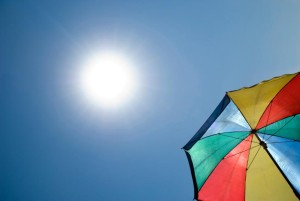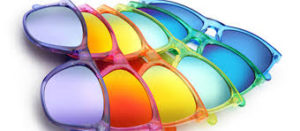 You can be in the sun without sunscreen for up to 20 minutes a day. This is extremely variable depending on your genetics. The darker and thicker your skin, the longer the sun exposure needed to start sun radiation damage. For freckling individuals, sun exposure may cause damage very quickly, even in less than 5 minutes. This is why it is very important to protect your skin with sunblock when you are outside. But what if you don’t want to use sunscreen… What other protection can I use?
You can be in the sun without sunscreen for up to 20 minutes a day. This is extremely variable depending on your genetics. The darker and thicker your skin, the longer the sun exposure needed to start sun radiation damage. For freckling individuals, sun exposure may cause damage very quickly, even in less than 5 minutes. This is why it is very important to protect your skin with sunblock when you are outside. But what if you don’t want to use sunscreen… What other protection can I use?
Wear Sunglasses
Sunglasses protect the sensitive skin around the eyes and also helps to prevent cataracts. The best sunglasses block 99 to 100% of UVA and UVB rays. Wrap-around sunglasses and styles that fit close to the eye are especially good because they prevent the sun’s rays from coming in through the sides.
Wear a Hat
A tightly woven hat with a 4-inch brim all the way around, helps shade your face, ears, and the back of your neck. Baseball caps leave your ears and neck exposed.
Wear Appropriate Clothing
This means long-sleeve shirts, and long pants. The colour of the fabric can also make a difference; as a general rule, lighter coloured fabrics let more UV rays through than darker coloured fabrics. Also the tighter the weave, and the thicker the fabric, and the better the clothing is at blocking UV rays.
Fabric Matters in Regular Clothing
Nylon – highly effective protection, Watch out for “stretchy” fabric – clothing that the weave expands when the material stretches, will let in more UV rays, so the correct fit is very important in elastic clothing.
Wool – moderately effective
Silk – moderately effective
Cotton, rayon, and hemp – least effective (unless chemically treated)
Denim (heavy weight) – superior protection
Lightweight cotton jersey knit, typical of T-shirt fabrics: SPF 4 (white) / 18 (dyed blue).
Heavy cotton twill – 8 oz. denim: SPF 12 (white) / 100 (dyed blue). Blue jeans eliminate 100% UV rays
Buy dark coloured clothing with tight-knit weaves or clothing with UPF.
UPF Clothing
The UPF rating is to clothing what the SPF rating is to sunscreen. The UPF rating is applied to textiles that protect your skin from the sun. SPF measures only how much UVB is blocked, but not UVA (unless it is labeled “broad spectrum”). UPF clothing blocks both types of damaging rays.
UPF clothing either blocks or absorbs UV radiation to protect your skin. The UPF rating is based on a fabric’s content, weight, color, and construction.
UPF rating for clothing:
15 to 24 – Good
25 to 39 – Very Good
40 to 50 – Excellent
It’s best to choose clothing with a UPF rating of 30 or higher; UPF 50 blocks 98 percent of UV rays.
Whether you buy UPF clothing, or wear what you have in your closet, make sure that you are protected from the suns damaging rays.


